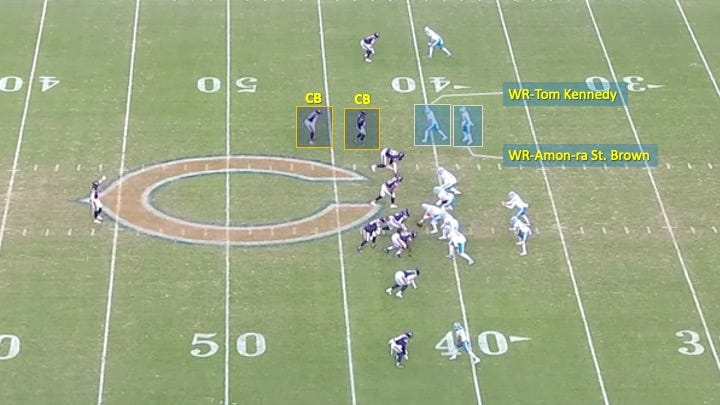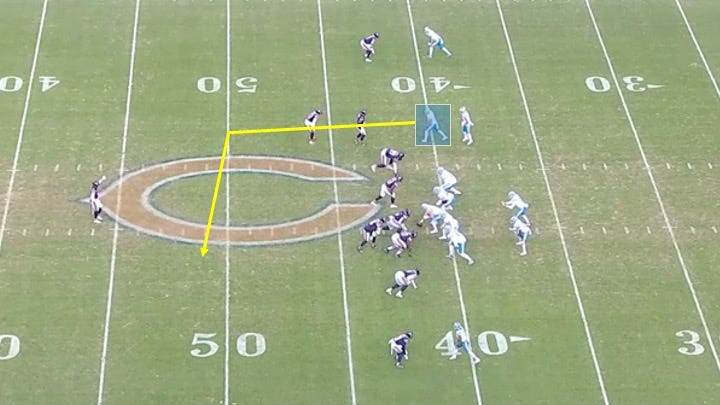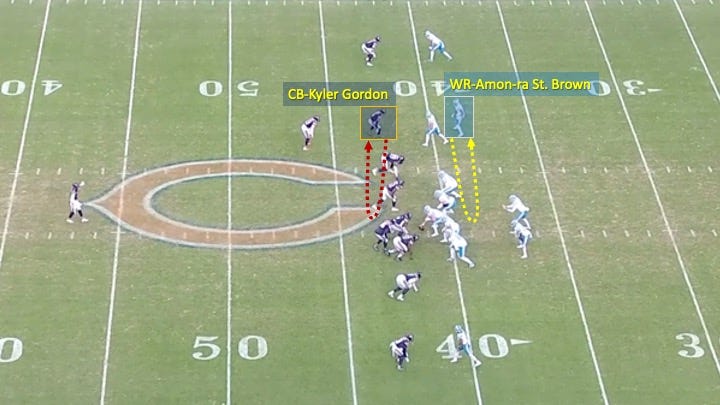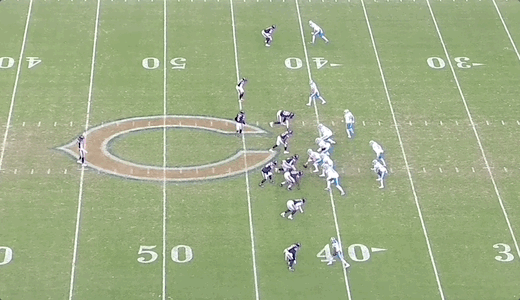The Detroit Lions shocked most football fans and experts in 2022, finishing with a winning record and barely missing the playoffs. They did so on the strength of an offense that finished 5th in the NFL in points and 4th in total yards.
The defining characteristic of the Lions offense was that they were able to create explosive plays without turning the ball over. They finished with the 5th most completions of 20 yards or more while also giving the ball away less than any team in the league.
This might be explained by the fact that Detroit finished 24th in air yards per pass attempt and 4th in YAC (yards after the catch) per completion. That means they weren’t chucking the ball downfield and putting it in harm’s way to create those explosive plays. Instead, they were often able to attack with shorter, safer throws that led to run-after-the catch opportunities.
Risk-free big plays. The ability to generate these is a pretty good indicator of how effective an offensive scheme is. The only team that had a similar passing-game profile as the Lions (Top-10 in big plays, Bottom-10 in giveaways, Bottom-10 in air yards per pass) was the 49ers. Last I checked, Kyle Shanahan’s scheme is pretty widely renowned for being a good one.
Offensive Coordinator Ben Johnson deserves a ton of credit for how good the Lions offense was last year. They were a fun watch on tape as he used everything at his disposal to attack.
From a formation and personnel package standpoint, Johnson mixed things up brilliantly, and he was play-to-play with how he used both. It wasn’t unusual to see 4 wide receivers on one play, 6 offensive linemen on the next, and then an 11 personnel package with the running back and tight end on the perimeter and a wide receiver in the backfield. That’s not easy for defenses to handle.
Their route concepts were difficult to predict because they could be run from many of these various formations and personnel packages. When you mix in an under-center play-action game that was one of the best in the league and a diverse run game with plenty of built-in deception, the result was an offense that kept defenses on their heels at all times.
We’re going to take a deep dive into several elements of the Lions offense over the next week or so. Today, we’re going to focus on how Johnson used personnel and formations to create coverage indicators and favorable matchups.
The below example was a 3rd-and-8 against the Bears in Week 10. The Lions were trailing by 6 and had a little more than 3 minutes remaining in the game. Detroit came out in 11 personnel and put tight end Shane Zylstra on the perimter to get a clue of the defense. The Bears matched up with safety Jaquan Brisker, an indicator of man coverage:
In the slot, the Lions had two receivers (Tom Kennedy and Amon-ra St. Brown) aligned in a stack. The Bears matched up with two cornerbacks over them:
It was clear that this was very likely man coverage. But it wasn’t clear exactly how the Bears would handle the stack. Were they going to play the receivers or play their releases?
This was critical because the route Goff wanted to hit was Kennedy’s in-breaker. However, if the inner-most corner closest to the line of scrimmage would be covering him, there was the possibility that Kennedy would be disrupted at the snap and his route wouldn’t be that attractive as a result:
So the Lions used return motion with St. Brown, sending him to the middle of the formation and back. Cornerback Kyler Gordon followed him and then locked on once he returned:
This defined the matchups. With Gordon on St. Brown, the other corner (Jaylon Johnson) would be taking Kennedy and doing so from several yards beyond the line of scrimmage. The cushion he gave meant the in-breaker would be a good option for Goff to target:
With the Bears in single high and showing pressure, all Goff had to do post-snap was confirm the blitz, which meant that there would be no help defenders in the intermediate-middle of the field and Kennedy would likely be open.
Goff read it, knew where he was going with the ball immediately, and delivered an accurate pass. The result was a huge 44-yard play that led to the game-winning score:
What a great way to make life easier for your quarterback.
These types of tactics weren’t used by Johnson just to create big plays. They were also used often to help move the chains, keep the offense on schedule, and create constant offense.
The below play from the Lions’ Week 2 win over the Commanders is a good example.









